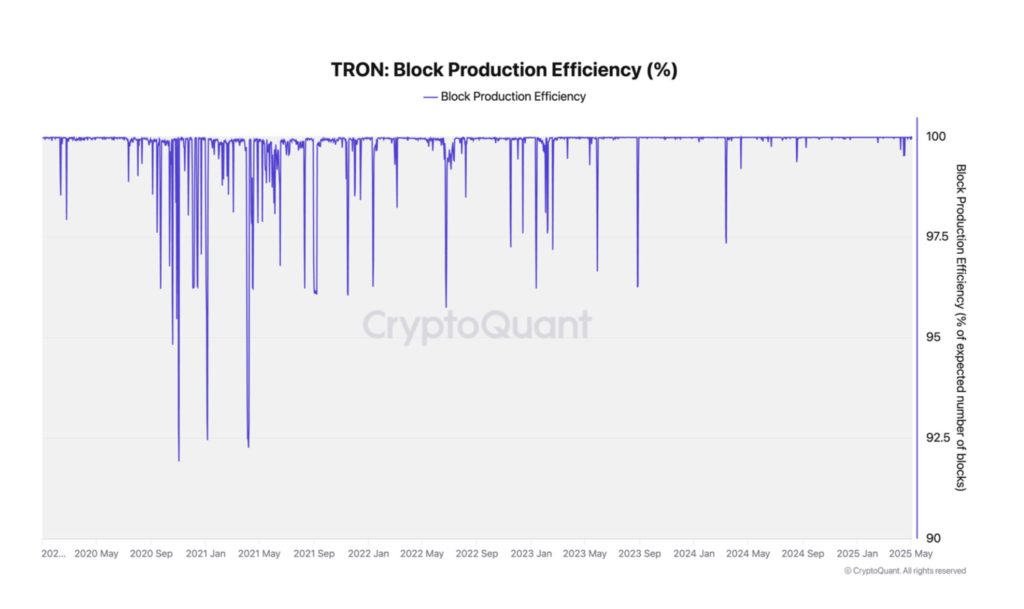TRON Nears Perfection: 99.7% Block Output Sparks Reliability Debate
TRON’s network just hit a staggering 99.7% block output rate—numbers that’d make even Bitcoin maximalists raise an eyebrow. Is this the blockchain equivalent of a ’mission accomplished’ banner, or just another bull market mirage?
Behind the numbers: The network’s recent upgrades slash latency and bypass legacy bottlenecks. But with ’institutional-grade reliability’ claims comes the inevitable question: Can any blockchain truly deliver five-nines uptime when even Wall Street’s mainframes crash on earnings day?
The closer: If TRON maintains this pace, it might finally shed its ’entertainment chain’ reputation. That is, until the next crypto winter exposes whether this is engineering brilliance or just another overfunded stress test.

This near-perfect production rate shows the robustness of TRON’s infrastructure and demonstrates the platform’s ability to maintain high throughput and operational reliability.
This performance is an improvement from the more volatile period of 2020–2021, when block production experienced periodic disruptions and fluctuations.
TRON quietly hits 99.7% block production efficiency, and replaces 68% of its Super Representatives since 2020.
Behind the scenes, it’s becoming one of the most stable and decentralized high-throughput blockchains. pic.twitter.com/EewbOnx8xj
The current consistency in block output shows a maturing network that has optimized its performance over time. With fewer large swings in daily block generation, TRON demonstrates an increasingly dependable environment for decentralized applications and transactions.
TRON’s Super Representative System Key Contributor
According to CryptoQuant, one key factor contributing to this performance is TRON’s Super Representative (SR) system, which plays a central role in block production under the network’s delegated proof-of-stake (DPoS) consensus mechanism.
In 2025, the number of different SRs remained stable at 30, with 24 responsible for producing 3.71% of the total blocks. This closely mirrors the distribution seen in 2020, when 34 SRs were active and 17 produced a similar percentage of blocks.
However, beneath this surface-level stability lies an evolving SR composition. While the total number of SRs hasn’t changed dramatically, the identities of those producing blocks have shifted.
According to CryptoQuant, 23 of the 34 SRs that were active in 2020—approximately 68%—are no longer part of the block production group in 2025. This turnover has introduced 19 new SRs into the system, reflecting a dynamic, merit-based governance structure.
Additionally, this steady rotation in SR roles showcases the decentralized nature of TRON’s governance. Rather than a fixed group of producers monopolizing control, the network fosters healthy competition and ongoing community engagement.
The ability of new entrants to secure enough votes to become block producers shows TRON’s transparent and inclusive approach to blockchain management, reports CryptoQuant.
TRON’s consistent 99.7% block production rate and evolving Super Representative structure demonstrate a secure, efficient, and decentralized platform.
As TRON continues to mature, it sets a benchmark for operational reliability in the blockchain space, reinforcing its position as a high-performance network built for scalability and long-term growth.

